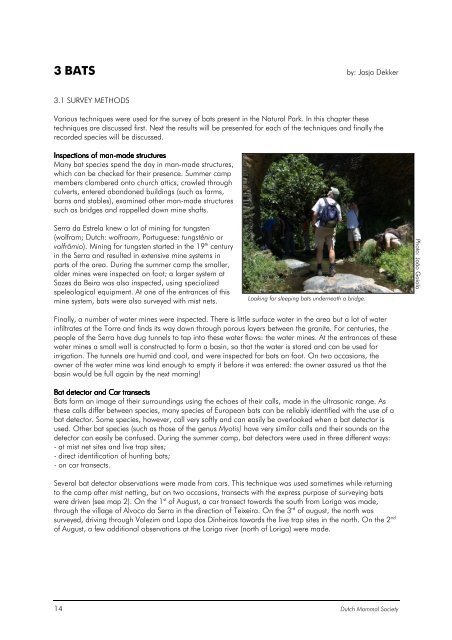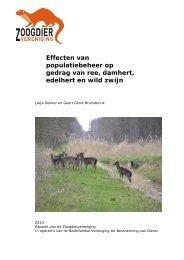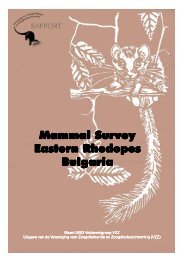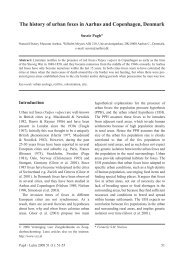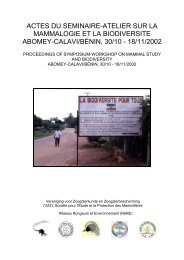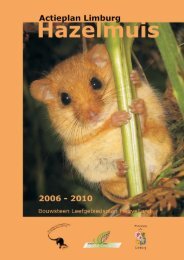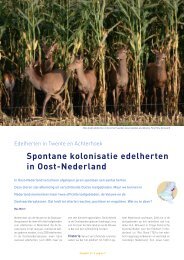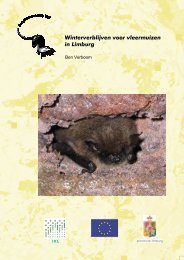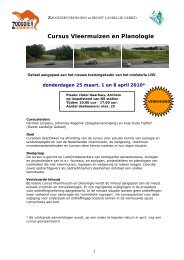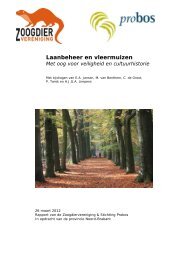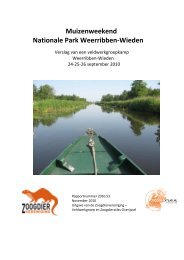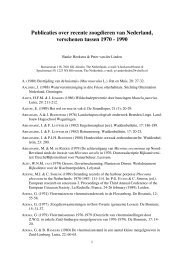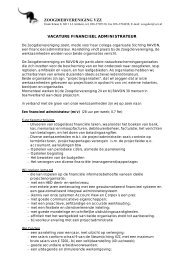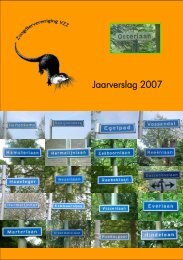mammal survey serra da estrela portugal - De Zoogdiervereniging
mammal survey serra da estrela portugal - De Zoogdiervereniging
mammal survey serra da estrela portugal - De Zoogdiervereniging
You also want an ePaper? Increase the reach of your titles
YUMPU automatically turns print PDFs into web optimized ePapers that Google loves.
3 BATS by: Jasja <strong>De</strong>kker3.1 SURVEY METHODSVarious techniques were used for the <strong>survey</strong> of bats present in the Natural Park. In this chapter thesetechniques are discussed first. Next the results will be presented for each of the techniques and finally therecorded species will be discussed.Inspections of man-made made structuresMany bat species spend the <strong>da</strong>y in man-made structures,which can be checked for their presence. Summer campmembers clambered onto church attics, crawled throughculverts, entered abandoned buildings (such as farms,barns and stables), examined other man-made structuressuch as bridges and rappelled down mine shafts.Serra <strong>da</strong> Estrela knew a lot of mining for tungsten(wolfram; Dutch: wolfraam, Portuguese: tungstênio orvolfrâmio). Mining for tungsten started in the 19 th centuryin the Serra and resulted in extensive mine systems inparts of the area. During the summer camp the smaller,older mines were inspected on foot; a larger system atSazes <strong>da</strong> Beira was also inspected, using specializedspeleological equipment. At one of the entrances of thismine system, bats were also <strong>survey</strong>ed with mist nets.Looking for sleeping bats underneath a bridge.Photo: João GaiolaFinally, a number of water mines were inspected. There is little surface water in the area but a lot of waterinfiltrates at the Torre and finds its way down through porous layers between the granite. For centuries, thepeople of the Serra have dug tunnels to tap into these water flows: the water mines. At the entrances of thesewater mines a small wall is constructed to form a basin, so that the water is stored and can be used forirrigation. The tunnels are humid and cool, and were inspected for bats on foot. On two occasions, theowner of the water mine was kind enough to empty it before it was entered: the owner assured us that thebasin would be full again by the next morning!Bat detector and Car transectsBats form an image of their surroundings using the echoes of their calls, made in the ultrasonic range. Asthese calls differ between species, many species of European bats can be reliably identified with the use of abat detector. Some species, however, call very softly and can easily be overlooked when a bat detector isused. Other bat species (such as those of the genus Myotis) have very similar calls and their sounds on thedetector can easily be confused. During the summer camp, bat detectors were used in three different ways:- at mist net sites and live trap sites;- direct identification of hunting bats;- on car transects.Several bat detector observations were made from cars. This technique was used sometimes while returningto the camp after mist netting, but on two occasions, transects with the express purpose of <strong>survey</strong>ing batswere driven (see map 2). On the 1 st of August, a car transect towards the south from Loriga was made,through the village of Alvoco <strong>da</strong> Serra in the direction of Teixeira. On the 3 rd of august, the north was<strong>survey</strong>ed, driving through Valezim and Lapa dos Dinheiros towards the live trap sites in the north. On the 2 ndof August, a few additional observations at the Loriga river (north of Loriga) were made.14 Dutch Mammal Society


